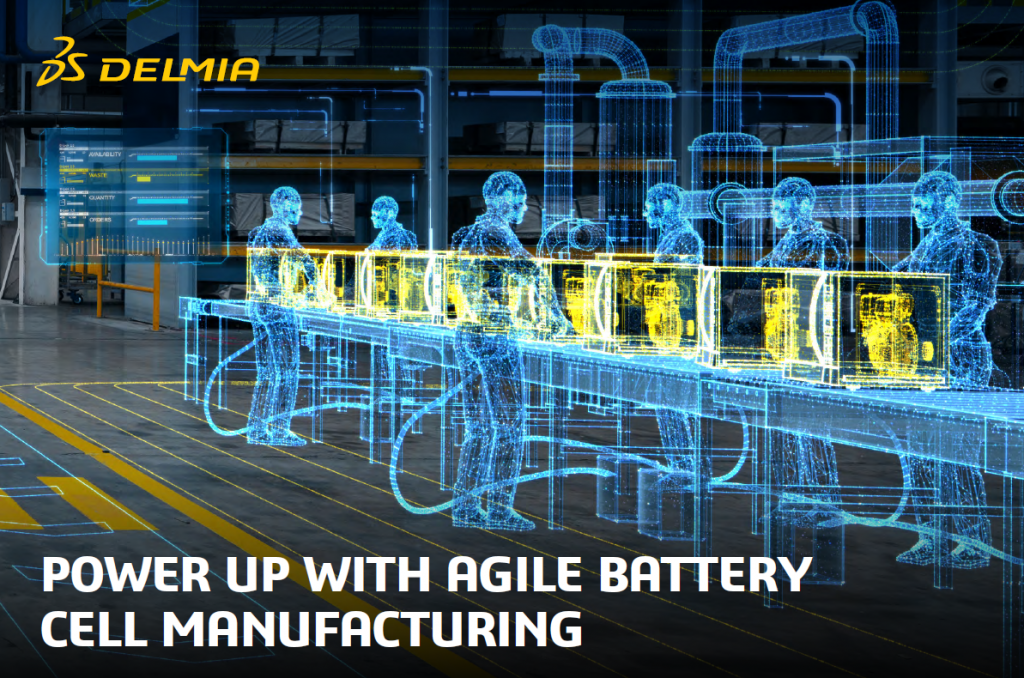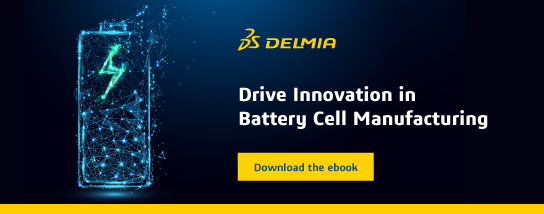
The global battery cell market is already growing rapidly thanks to rising demand — especially in electric vehicles—and it is predicted to continue accelerating. While this creates significant opportunity for battery cell manufacturers, there are several obstacles that they need to overcome by innovating in their supply chains and production facilities, allowing them to manufacture at scale with agility and in a profitable way.
1. Large investment and risk
Battery cell manufacturing requires a mix of innovative manufacturing and high speed, so inexperienced new players often have to start with testing in pilot plants to figure out how to manufacture at scale—translating to a significant entry barrier in the form of large capital investment and high risk.
2. Processing and yield rate
Battery cell manufacturing is not a fully automated process, and with a lot of human intervention required, quality and yield rate problems will arise. Manufacturers want to produce at high volumes, but this complexity in the process can lead to wastage, sometimes as high as 20%.
3. Supply Chain instability
Battery cell manufacturers are often dependent on outside suppliers for raw materials. Without visibility on their suppliers’ lead times, any disruption in the supply chain upstream could send production grinding to a halt.
4. Evolving technology
The rapid evolution of battery cell technology means products go obsolete quickly. Many battery cell manufacturing plants are set up to produce high volumes and lack the flexibility to rapidly adjust manufacturing lines as new technology emerges.
5. Production scale
With so many challenges involved, the big overarching question now is whether it is possible to have highly flexible, high-velocity production at high volumes with high yield. Manufacturers may struggle to find the right balance while scaling up production.
6. Shrinking margins and sustainability
Battery cell manufacturers need their operations to be not just environmentally sustainable, but also financially sustainable. It is challenging to balance cost and profitability with production quality, manufacturing flexibility and sustainable practices.
Essential Criteria for Manufacturing Success
DELMIA believes that battery cell manufacturers will be able to overcome these industry challenges by equipping themselves with the Virtual Twin Experience. Powered by a unified, integrated platform called 3DEXPERIENCE, the Virtual Twin Experience fulfills three essential criteria that any solution needs to help manufacturers excel in this industry.
- Convergence of the virtual and real worlds: leveraging a virtual environment that is synchronized with its real-world counterparts allow for risk-free testing to help manufacturers plan and execute flawlessly in the real world.
- Planning across all time horizons: the Virtual Twin Experience’s capabilities in data intelligence and simulation allows manufacturers to plan from the strategic level all the way down to day-to-day operations.
- Covers multiple disciplines across operations: the Virtual Twin Experience offers the flexibility to optimize everything from physical assembly lines to production processes and operations so manufacturers can execute flawlessly and deliver optimal results to meet business goals.
Learn more about how the Virtual Twin Experience works and how it can be implemented in battery cell manufacturing by downloading our ebook.


